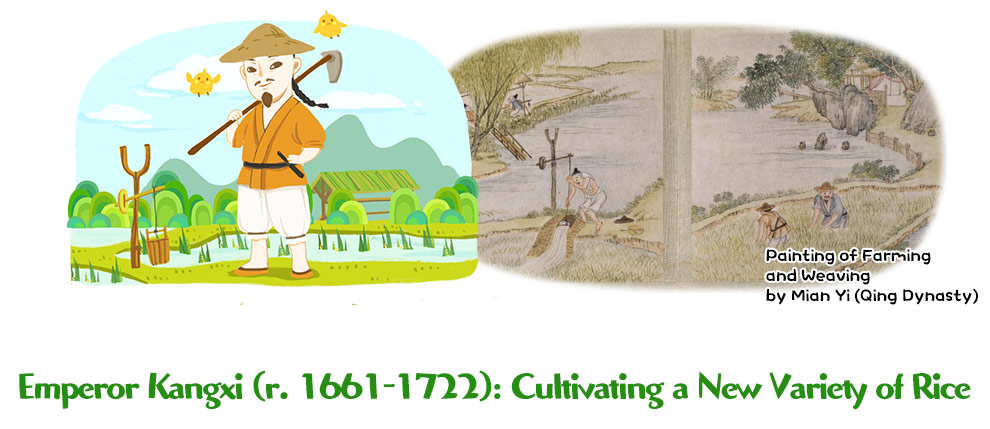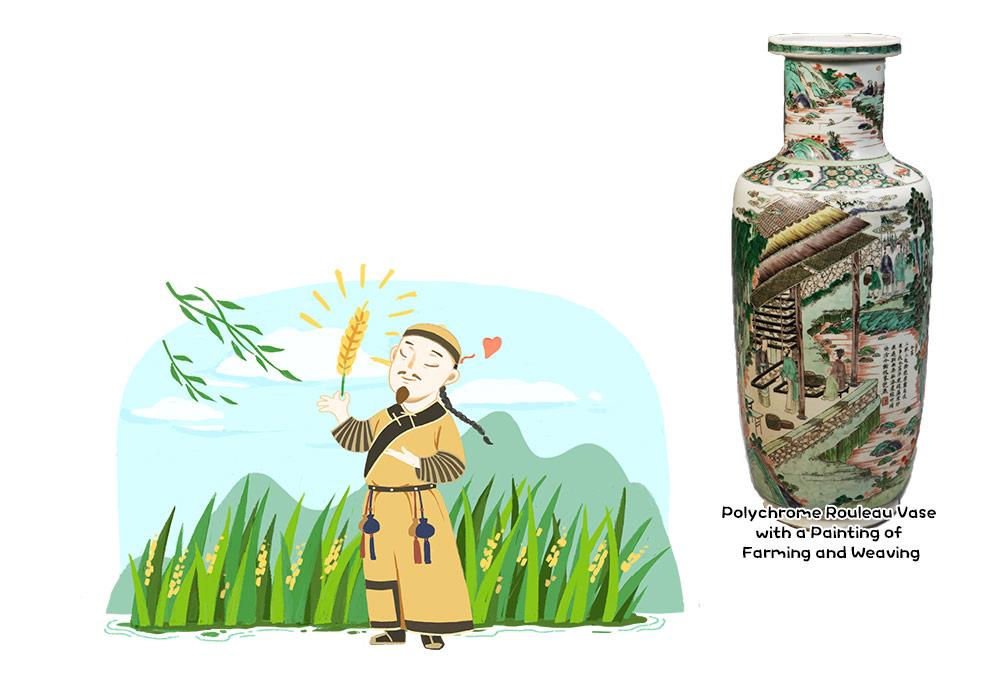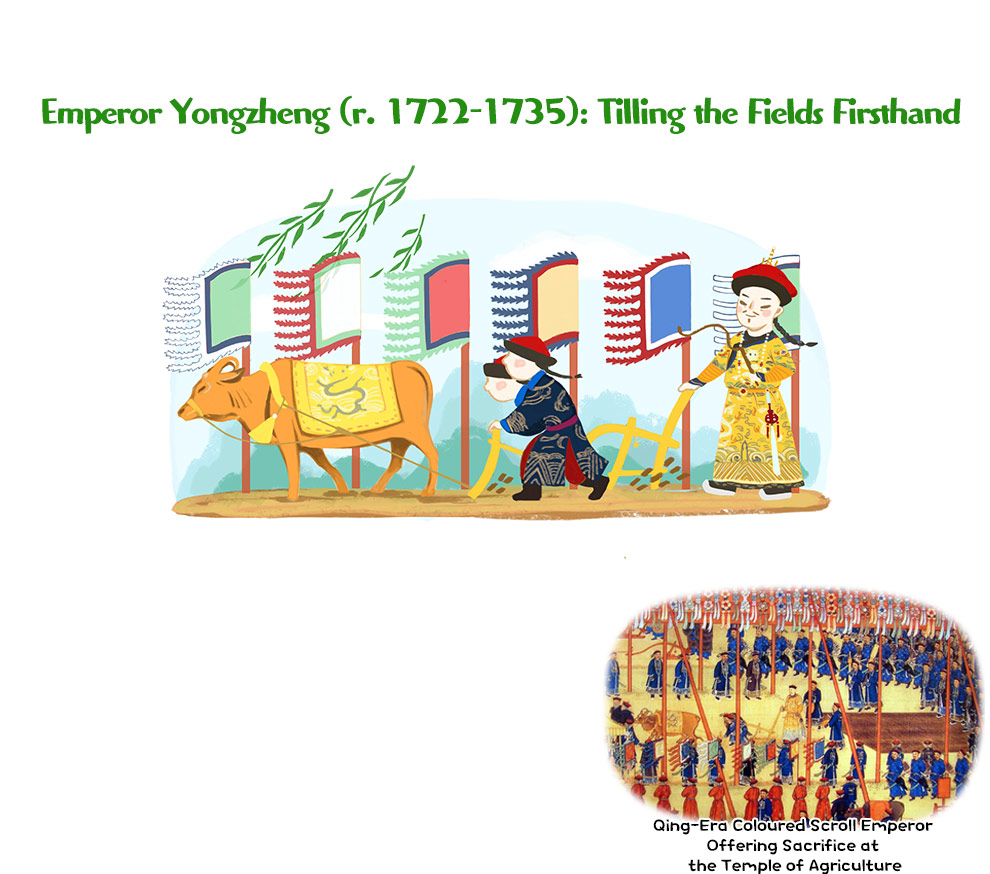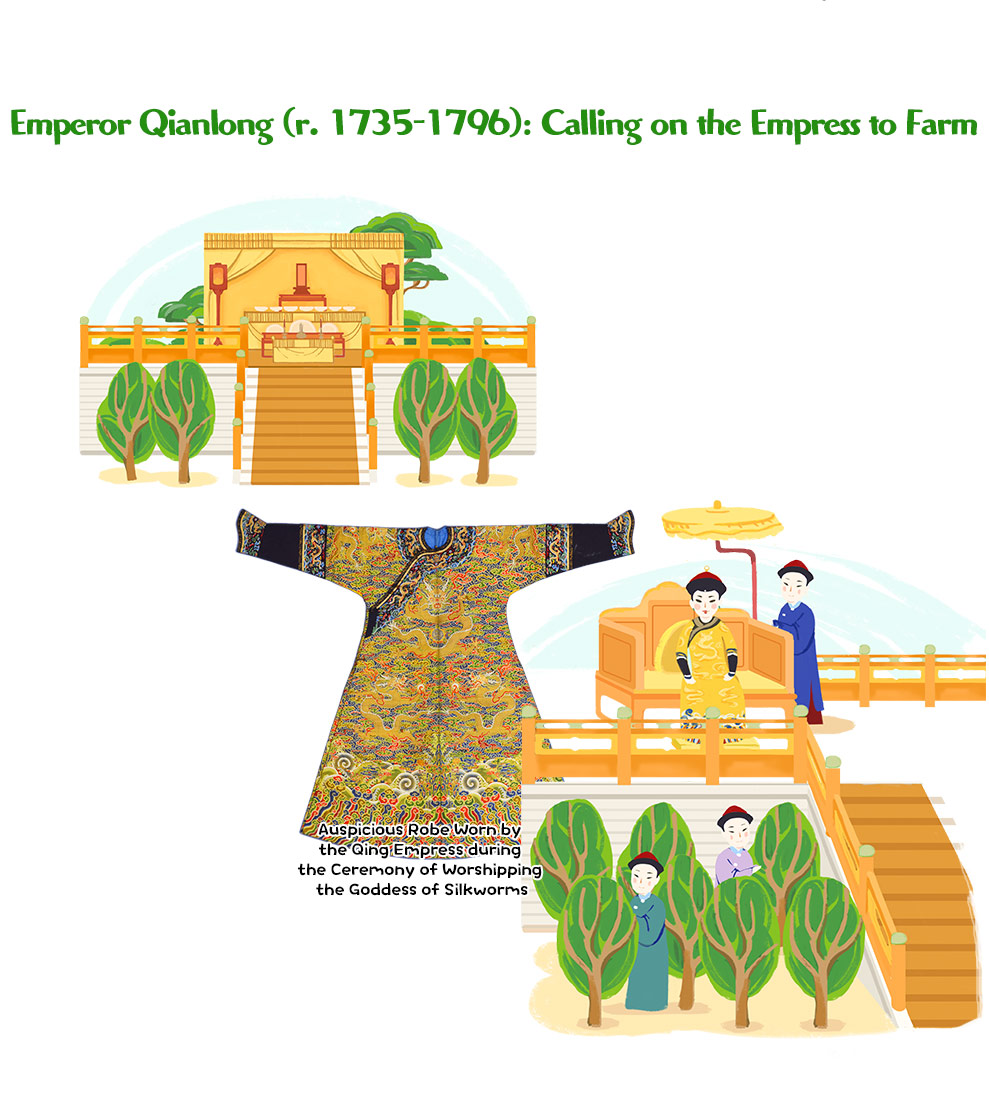After harvesting in autumn and storing grain in winter, spring arrives, and a new round of planting begins. In ancient times, ensuring the people had enough to eat and wear was a top priority for every emperor. During the spring planting season, even the emperor, despite his many affairs of state, would occasionally take on the role of a farmer, working the fields to set an example for the people. Look, they’re getting started!
Did you know? Beyond the resplendent pavilions and halls adorned with gilded roofs and carved beams, there was a simple courtyard called Fengze Garden in the imperial gardens. Located within Zhongnanhai, west of the Palace Museum, it served as Emperor Kangxi’s personal "VIP test field". Each year, he would cultivate crops there, experiencing life as an “orchard farmer”.
Fengze Garden was planted with various rice crops, which were harvested each September. One June, Emperor Kangxi noticed a particularly tall stalk while strolling along the rice fields just as the rice plants were sprouting. Upon closer inspection, he found that its grains had already ripened. He harvested this stalk and set it aside, deciding to plant its seeds again the following year to see if they would ripen early again. The next year, by June, the test crop was indeed ripe, with full, plump grains. From then on, Fengze Garden grew this early-ripening rice variety annually, producing enough to supply the Imperial Kitchen.
Each year, the emperor participated in various sacrificial ceremonies, including the rite of worship for the God of Agriculture, or “Xian Nong”. According to legend, Xian Nong was the first to teach people farming. Every spring, the emperor would lead officials to the Temple of Agriculture to honour this deity, praying for favourable weather and abundant harvests in the coming year.
After the ceremony, the emperor would personally till the fields. The second scroll of the painting Emperor Offering Sacrifice at the Altar of Agriculture captures this grand and intricate scene. The emperor’s observation terrace, made of vermilion wood, occupies the central focus. Below the terrace, on both the left and right sides, are six black oxen, each harnessed to red wooden ploughs, and another yellow-cloaked ox is in the centre. Emperor Yongzheng himself holds the plough with one hand and a whip with the other, engaging in a symbolic display of farm labour.
Unlike Kangxi, Yongzheng’s “ploughing in person” was purely ceremonial. In the painting, two labourers behind the imperial ox are seen bending their backs, providing the actual effort.
In ancient China, men ploughed and women wove—a division of labour within each household. As the foremost husband and wife of the realm, the emperor and empress followed this model as well. During the spring season, the emperor not only performed sacrifices and ploughed fields but also required the empress to lead a ceremony of worshipping the Goddess of Silkworms, setting an example for women across the empire. This was the highest ritual the empress could perform.
In early spring of the ninth year of Emperor Qianlong’s reign (1744), the Qing court held its first-ever ritual of worshipping the Goddess of Silkworms. A yellow canopy was erected at the Altar to the Goddess of Silkworms at the northern end of Taiye Lake in the Western Garden (now the back entrance of Beihai Park). Inside, the Goddess of Silkworms, Leizu, was enshrined, along with various offerings. Empress Xiaoxian, accompanied by consorts and palace maids, approached the altar, kneeling, offering incense, and presenting offerings to the Goddess of Silkworms.
The day after the sacrificial ceremony, the empress would return to the Altar to the Goddess of Silkworms, holding a golden hook and basket, symbolically picking a few mulberry leaves in the mulberry grove before ascending her throne to watch the consorts and palace maids gather more leaves. These leaves would be fed to the silkworms, and the finest cocoons would later be presented to the empress, who would then offer them to the emperor and the empress dowager.
The emperors’ ploughing in person may seem like an imperial “press conference”, yet it successfully conveyed the spirit of promoting agriculture and encouraging production to the people throughout the country.



